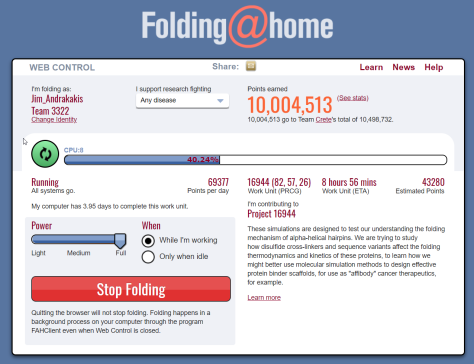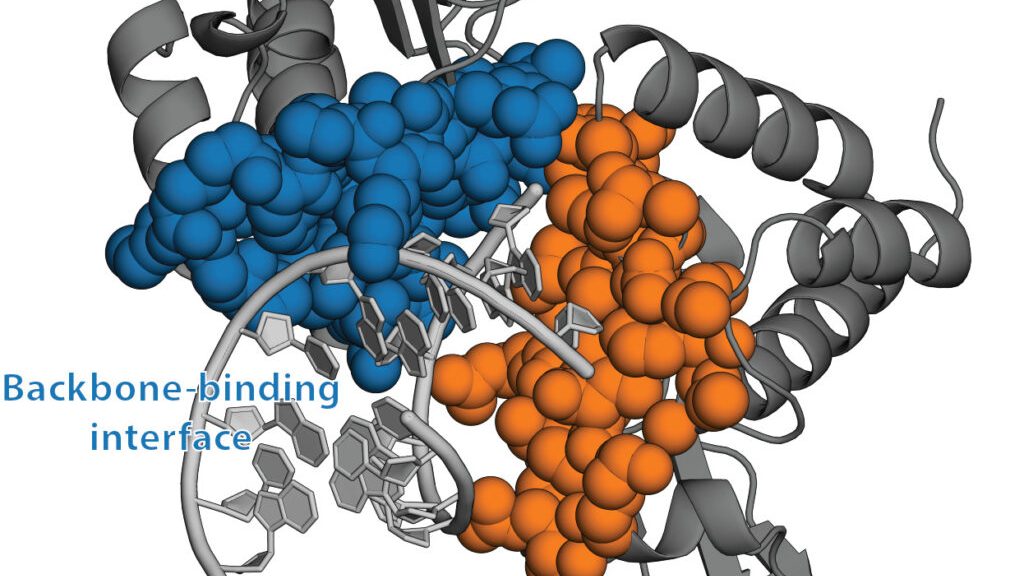I’m not a fan of IT hubris. I cringe -literally- when I hear stuff like “let’s fight cancer (or whatever) with scrum”. You don’t fight diseases with IT; at best, you can help.
But help can be important. One problem that IT is very well suited to solve is understanding how viruses and bacteria behave under certain circumstances. The Folding@Home project explains:
WHAT IS PROTEIN FOLDING AND HOW IS IT RELATED TO DISEASE?
Proteins are necklaces of amino acids, long chain molecules. They are the basis of how biology gets things done. As enzymes, they are the driving force behind all of the biochemical reactions that make biology work. As structural elements, they are the main constituent of our bones, muscles, hair, skin and blood vessels. As antibodies, they recognize invading elements and allow the immune system to get rid of the unwanted invaders. For these reasons, scientists have sequenced the human genome – the blueprint for all of the proteins in biology – but how can we understand what these proteins do and how they work?
However, only knowing this sequence tells us little about what the protein does and how it does it. In order to carry out their function (e.g. as enzymes or antibodies), they must take on a particular shape, also known as a “fold.” Thus, proteins are truly amazing machines: before they do their work, they assemble themselves! This self-assembly is called “folding.”
WHAT HAPPENS IF PROTEINS DON’T FOLD CORRECTLY?
Diseases such as Alzheimer’s disease, Huntington’s disease, cystic fibrosis, BSE (Mad Cow disease), an inherited form of emphysema, and even many cancers are believed to result from protein misfolding. When proteins misfold, they can clump together (“aggregate”). These clumps can often gather in the brain, where they are believed to cause the symptoms of Mad Cow or Alzheimer’s disease.
The project has made it very easy for anyone to help. You just download and install their software, and your computer starts calculating, solving math problems -essentially, you’re giving your computer’s processing power when you don’t use it. You can see your -and other’s- contribution in the project stats.
I heartily encourage you to do so.


